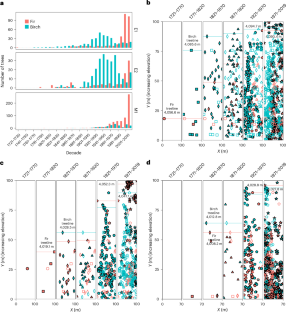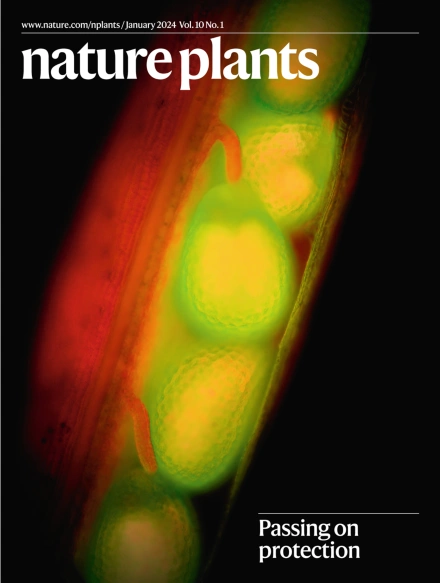气候变暖下喜马拉雅高山林带的加速演替
IF 15.8
1区 生物学
Q1 PLANT SCIENCES
引用次数: 0
摘要
了解气候变化如何影响演替是预测未来森林组成的基础。预计气候变暖将加速物种在其寒冷热范围内的演替,如高山林木线。在喜马拉雅山脉中部的林线上,我们结合小区数据和基于个体的林线模型,研究了早演替桦树(Betula utilis)和晚演替冷杉(Abies spectabilis)的相互作用和演替策略如何影响林线动态。与桦树(0.06 ± 0.03 m/yr-1)相比,冷杉在过去 200 年中表现出不断增加的更新率和更高的上坡迁移率(0.11 ± 0.02 m/yr-1)。空间分析表明,在树木幼年时,物种间的竞争非常激烈。各种气候情景下的模型输出结果表明,随着气候变暖,冷杉可能会加速向上坡移动,而桦树的新陈代谢将急剧下降,形成稳定甚至后退的树线。我们的研究结果表明,随着晚演替物种迅速取代先演替物种,演替动态将不断加快,这为未来森林演替及其对生态系统服务的影响提供了启示。本文章由计算机程序翻译,如有差异,请以英文原文为准。


Accelerated succession in Himalayan alpine treelines under climatic warming
Understanding how climate change influences succession is fundamental for predicting future forest composition. Warming is expected to accelerate species succession at their cold thermal ranges, such as alpine treelines. Here we examined how interactions and successional strategies of the early-successional birch (Betula utilis) and the late-successional fir (Abies spectabilis) affected treeline dynamics by combining plot data with an individual-based treeline model at treelines in the central Himalayas. Fir showed increasing recruitment and a higher upslope shift rate (0.11 ± 0.02 m yr−1) compared with birch (0.06 ± 0.03 m yr−1) over the past 200 years. Spatial analyses indicate strong interspecies competition when trees were young. Model outputs from various climatic scenarios indicate that fir will probably accelerate its upslope movement with warming, while birch recruitment will decline drastically, forming stable or even retreating treelines. Our findings point to accelerating successional dynamics with late-successional species rapidly outcompeting pioneer species, offering insight into future forest succession and its influences on ecosystem services. Climate warming is accelerating successional dynamics, with late-successional species rapidly outcompeting pioneer species at Himalayan treeline ecotones, offering insight into future forest succession and its influences on ecosystem services.
求助全文
通过发布文献求助,成功后即可免费获取论文全文。
去求助
来源期刊

Nature Plants
PLANT SCIENCES-
CiteScore
25.30
自引率
2.20%
发文量
196
期刊介绍:
Nature Plants is an online-only, monthly journal publishing the best research on plants — from their evolution, development, metabolism and environmental interactions to their societal significance.
 求助内容:
求助内容: 应助结果提醒方式:
应助结果提醒方式:


